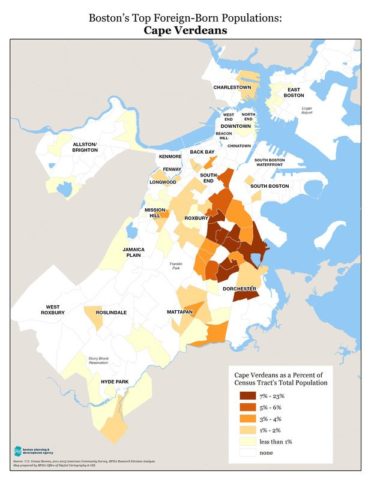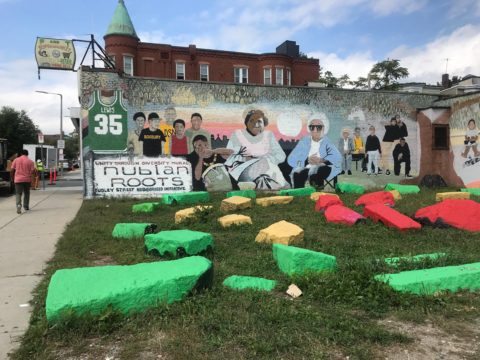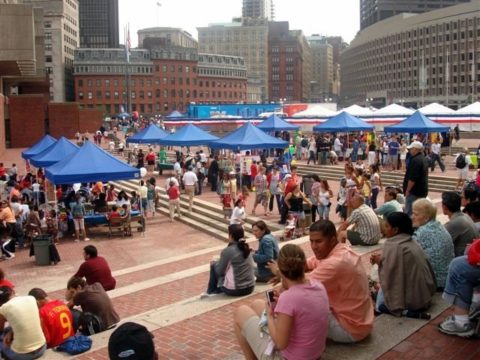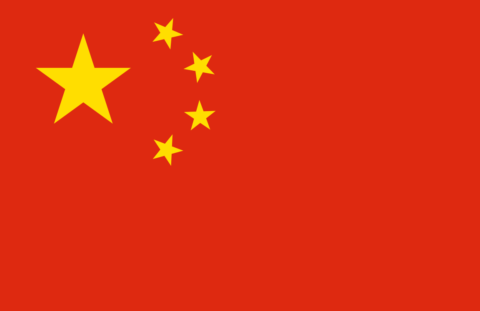Cesaria Restaurant
266 Bowdoin St, Boston MA
(617) 282-1998
Restaurante Cesaria’s namesake, Cesaria Evora, was a renowned Cape Verdean singer and national icon who brought morna—the longing, soulful national music of Cape Verde—to international attention. Cesaria the restaurant has been just as famous for Boston’s Cape Verdean community since it opened its doors 18 years ago, transcending beyond a business by being an extended family and communal gathering place for Cape Verdeans young and old. Occasionally, new arrivals from the islands even make Cesaria their first stop right after landing at Logan, hoping to gain practical advice and a warm welcome from Cape Verde’s unofficial embassy in Boston.
Cape Verdeans
Cape Verdean Overview

Geographically, Cape Verde is an archipelago of ten islands off the coast of West Africa. More importantly, Cape Verde is an archipelago of people, scattered across the world in a diaspora outnumbering the population on the islands. Cape Verdean Americans have challenged America’s notions of ethnicity and culture, and have made Boston an island outpost knit tight by family and culture.
“The Wealthiest City on Earth”
Cape Verde is Portuguese for “green cape,” an ironic name for islands that have suffered frequent droughts and years between rainstorms. Spurred by drought conditions and the lure of a profitable whaling economy, young Cape Verdean men in the mid-1800s began working for New England whalers who plied the North Atlantic to supply whale oil to an industrializing world. Whaling ship captains employed thousands of Cape Verdeans for their sailing skill, intense work ethic, and, importantly, because they were able to pay them far less than white sailors. Many eventually settled in New Bedford, MA, the center of New England’s whaling industry and at one point the richest city on Earth (per capita). As the whaling industry dried up in the late 1800s, enterprising Cape Verdeans bought up the remaining fleet of old whaling vessels, refitting them to be used as “packet ships,” sending valuable goods and investment back to the isles and bringing new immigrants to Massachusetts.
“Na Buska Vida:” In Search of New Life
The first wave of Cape Verdean Americans made a home for themselves in Southeastern Massachusetts, many of them working in cranberry bogs as the port economy dried up. As immigration restrictions kicked in during the 1920s, Cape Verdean immigration halted and would not recover until after the islands’ independence from Portugal. In the meantime, New Bedford Cape Verdeans organized benevolent associations, social clubs based on island origins, and soccer associations. When the newly independent Cape Verde began issuing visas again in 1975, a new wave of Cape Verdeans migrated to Boston and Brockon. Today, the cities of New Bedford, Brockton, and Boston each share roughly equal populations of Cape Verdeans. Constricted by housing segregation, Cape Verdeans in Boston settled in Roxbury and Dorchester, anchored by Nubian Square to the north and Upham’s Corner to the south.
Identities In-Between
Kriolu, Cape Verde’s national tongue, reflects the unique culture and ancestry of Cape Verdeans: an intersection between Portuguese and West African languages, Kriolu mirrors the cuisine, music, and art of islands. As a result, Cape Verdeans in America have been uniquely liable to feelings of invisibility and intersectionality. Cape Verdeans have fought to define themselves amid America’s racial system, and many recount stories of being confused for Black American or Hispanic. Many Cape Verdeans are forced to either assimilate into ethnic spaces, or attempt to create their own category for themselves. At home, Cape Verdeans identify ethnicity based on subtle facial features rather than purely skin color, a system that conflicts with America’s broad, black-and-white understanding of race. Most importantly, Cape Verdeans use what island they come from as an identifying mark, rather than merely skin tone. Some Cape Verdeans have assimilated into the Black community, while others find closer ties to Portuguese immigrants, and still others continue to fight for “Cape Verdean” to be recognized as a category of its own.
The Twelfth Island
Boston’s Cape Verdean community is diverse and growing. Tightly-knit by family connections, sometimes with entire blocks composed of family members, Cape Verdeans have sculpted their own space in Roxbury and Dorchester. Without being confined to specific economic niches, Cape Verdeans own and run many local businesses, including restaurants, bodegas, groceries, and barbershops. Violence continues to be a pernicious challenge to the community, made even more tragic when family members find themselves on opposite sides of gang rivalries. Major community efforts have nevertheless anchored the community to a network of strong support; initiatives to develop neighborhood businesses and parks without inviting gentrification, ethnic associations supporting ESL classes and soccer programs for youth, and food drives serving free food from local restaurants to pandemic-isolated seniors are only some examples of Cape Verdeans drawing strength from themselves.

This mural outside F and T (Davey’s) Supermarket in Roxbury proudly showcases the neighborhood’s African heritage. Recently renamed from Dudley Square to Nubian Square, much of the transformative work within this community has been done by land trusts and civic leaders committed to providing long-term affordable housing for residents. The family that owns this bodega are Cape Verdean immigrants.
Community Spotlight
Please click on the map dots to learn more about each location. They represent many different aspects of the Cape Verdean community. Each location contains a general description as well as additional photos and contact information.
-
-
Nos Casa Cafe
475 Dudley St, Boston MA
(617) 606-7060
Nos Casa’s humble roots started when Ana Maria Fidalgo and her son Joshua wanted a way to employ Cape Verdean women in the community who had recently lost jobs after the economic recession. Continuing that philosophy of existing for (rather than just to make a buck off) the local community, Nos Casa has provided hundreds of free meals for elderly and meal-insecure neighbors in the Dudley Street area during the COVID-19 pandemic, partnering with the Blue Hill Adult Center to ensure access to food for residents even as the cafe itself faces economic hardships. Founder and owner Joshua Fidalgo is a B.C. High alumni, and in addition to working at Nos Casa, also serves as the Dean of Student Culture at the Dearborn STEM Academy nearby. -
Cape Verdean Association of Boston
242a Bowdoin St, Boston MA
(617) 506-8150
Celebrating its 20th anniversary this year, the Cape Verdean Association of Boston has been a hotbed of political activism and community organization for years. Among its accomplishments include inaugurating the first Cape Verdean liaison to City Hall, campaigning for school reform, and opening gang dialogues to stem community violence. The CVA also provides numerous resources for immigrants, victims of violence, cultural educators, teenagers, and young professionals. -
Dudley Street Neighborhood Initiative
550 Dudley Street, Roxbury, MA
617-442-9670
The DSNI has been a tremendous force for good in the Nubian Square neighborhood since its inception in 1984. Fighting the creep of abandoned spaces, vacant lots, and disinvestment, the DSNI (a team of residents, non-profits, and local businesses) has reclaimed and redeveloped over 600 homes, in addition to building a town common, parks, playgrounds, and gardens in Roxbury. Committed to building community wealth, the DSNI’s philosophy of development without displacement of native residents has at times conflicted with City Halls’ ambitious “urban renewal” projects. Yet DSNI’s model has proven itself time and time again: today it is the largest urban, community-owned land trust in the nation. DSNI’s former director and Cape Verdean resident, John Barros, now serves as Boston’s Chief of Economic Development. -
St. Peter’s Parish Church
311 Bowdoin St, Boston, MA
(617) 265-1132
St. Peter’s and St. Patrick’s church to the north anchor Boston’s Catholic Cape Verdean community. Supported by the church, the St. Peter’s Teen Center missions itself as a second home for middle and high school students in the Bowdoin-Geneva neighborhood (many of whose parents often work 2 or 3 jobs). In addition to after-school and summer programs for teens, the center provides workout, dance, and basketball facilities, as well as home-cooked meals and transportation for students to access its resources.
Themes
- First wave of Cape Verdeans seek work on whaling ships due to drought conditions on islands (mainly Brava and Fogo) in late 1800s to 1920s
- Many arrive in New Bedford
- Predominantly male sailors
- Many Cape Verdeans buy old vessels and refit them as packet ships to run the route between islands in the waning days of the whaling industry
- As the whaling industry declines, some turn to work in Massachusetts’ cranberry bogs
- Many early migrants face difficulty fitting into the dominant racial dichotomy of White and Black
- Often migrants chose to identify by economic status or island origin
- Immigration largely stops until 1975, when Cape Verde gains independence from Portugal and begins issuing travel visas again
- People become the most valuable resource in an archipelago lacking natural resources
- Immigrant remittances and investment allows young nation to grow
- Many dream of returning to the islands with money to live luxuriously
- “Sodade” = longing and nostalgia for home
- A new wave of immigrants arrives in Boston and Brockton
- New immigrants were more diverse, coming from islands other than Brava and Fogo
- Genders are more balanced
- Cape Verdeans in Boston settle in Roxbury/Dorchester area between Nubian Square and Upham’s Corner
- Neighborhood land trusts and advocacy groups give growing voice to Cape Verdeans in Boston
- DSNI founded in 1984 with mission to revitalize Dudley area, becomes largest urban land trust in the nation
- Cape Verdeans in local government include John Barros, the City of Boston’s Chief of Economic Development, and Liz Miranda, state representative
65k
Cape Verdeans live in MA with 29k in Greater Boston
8th
largest immigrant group in Boston
40%
increase in the Cape Verdean population in Boston between 2010-2016
57%
of Cape Verdean immigrants in Boston are first generation
70%
of Cape Verdean Americans live in MA making it the top destination in the US.







